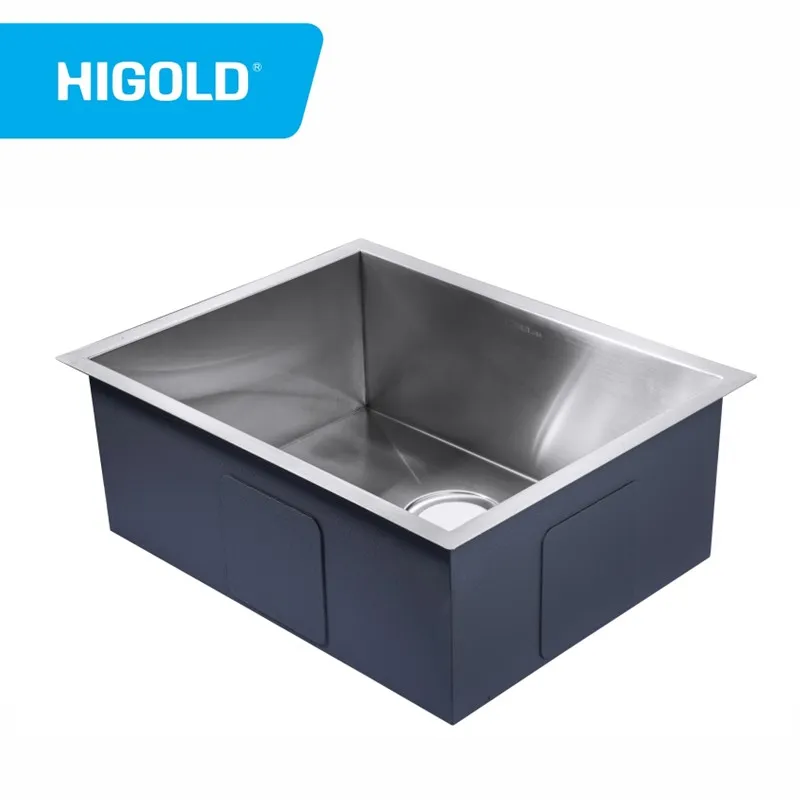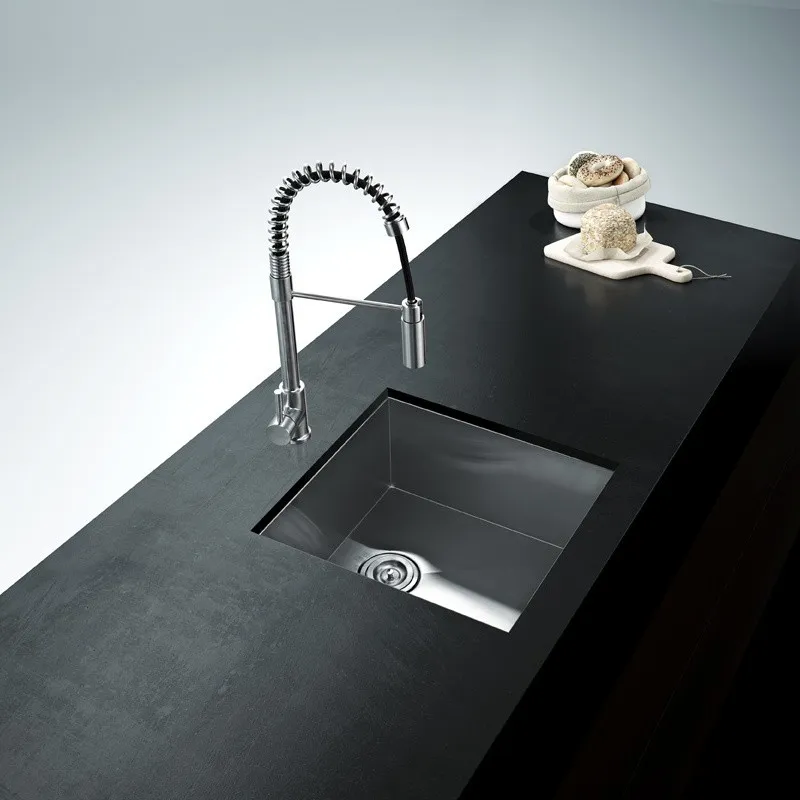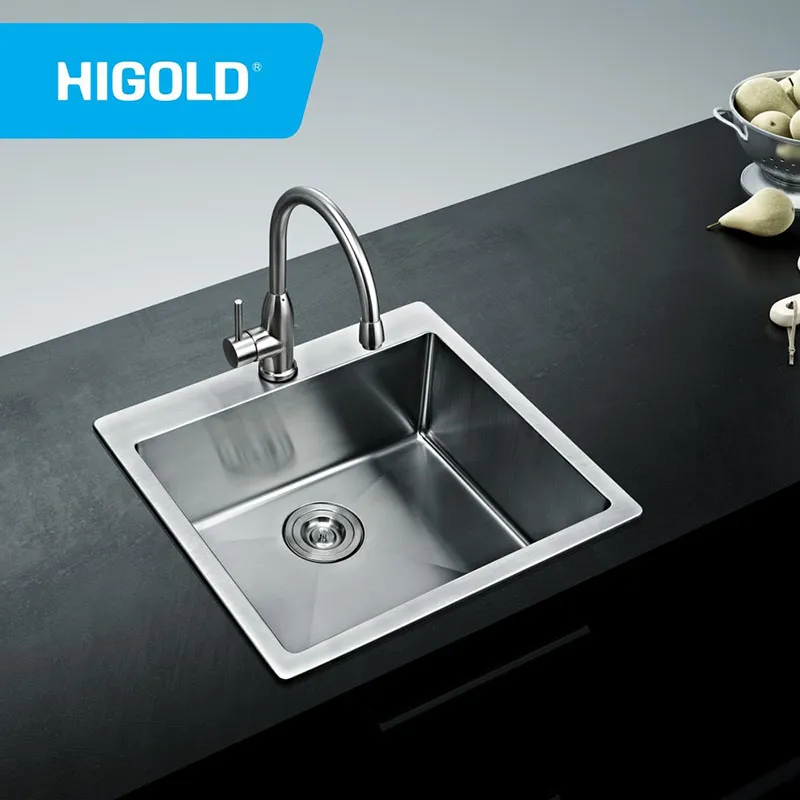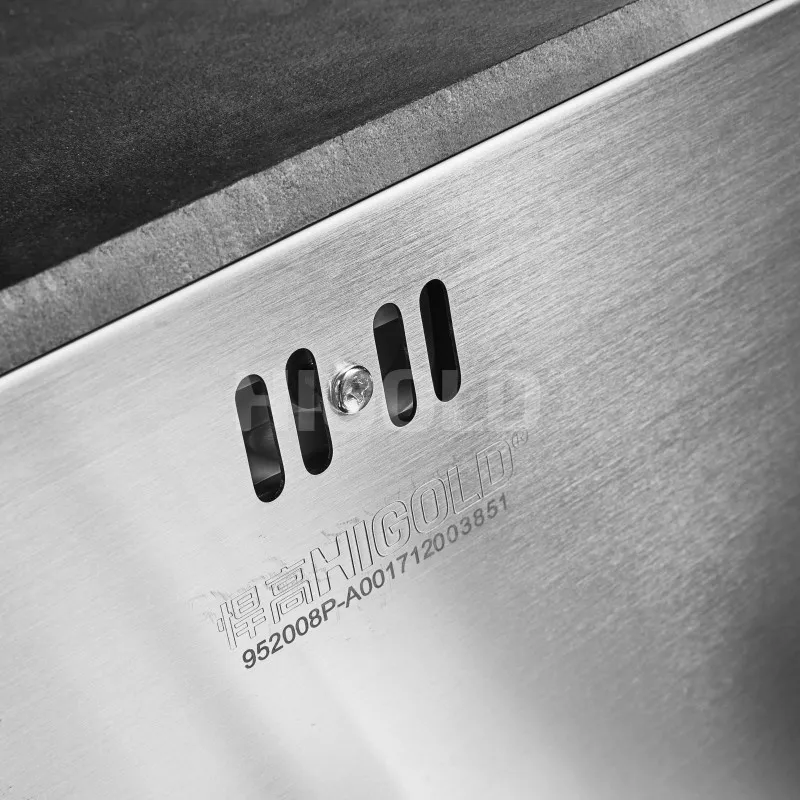When choosing a sink for a kitchen renovation, many families face a key question: which is better for their kitchen needs, an undermount sink or a topmount sink? There's no single answer to this question, as each sink type has its own unique advantages and applications.
Choosing the right sink not only considers the aesthetics and practicality of the kitchen but also factors such as installation ease, long-term usability, cleaning requirements, and budget.
This article will provide a detailed comparison of undermount and topmount sinks to help consumers make a more informed choice based on their needs.

Undermount sinks vs. topmount sinks: What are they?
1. Undermount sink
An undermount sink is a type of sink that is recessed into the countertop, leaving no visible seam between the outer edge and the surface. During installation, the outer edge of the sink is surrounded by the countertop material, and the sink body is located below the countertop. Undermount sinks can be used with a variety of countertop materials, such as granite, quartz, engineered stone, and stainless steel, and are relatively simple to install. This type of sink typically has a more traditional design, with noticeable lines, especially the seam between the sink and the countertop, creating a clean, minimalist look for the kitchen.

2. Topmount sink
A topmount sink is an installation method where the sink is placed entirely on the countertop, with the rim directly exposed. The top edge of a topmount sink is typically higher than the countertop, creating a clear line between the sink and the countertop, often creating a prominent effect at the junction of the countertop and sink. Unlike undermount sinks, topmount sinks are easier to install and are compatible with a variety of countertop materials.

Which is better, an undermount sink or a topmount sink?
1. Undermount sink vs. topmount sink: Aesthetics and design
Aesthetics of an undermount sink:
Undermount sinks make the seam between the sink rim and the countertop less noticeable, creating a clean, minimalist look. Especially in modern kitchens, undermount sinks are often considered a premium and high-end option. Because the sink is installed below the countertop, this seamless design creates a smoother overall visual effect, blending better into the overall kitchen design and enhancing its aesthetic appeal.
Top-mount sink aesthetics:
The outer edge of a top-mount sink is exposed above the countertop, often creating a noticeable seam, giving it a more traditional appearance. While top-mount sinks can also offer a striking design, the protruding edge can sometimes visually detract from the overall design. This is especially true in modern, minimalist kitchens, where a top-mount sink can appear less streamlined.
Generally speaking, undermount sinks offer a greater aesthetic advantage, offering a smoother, more streamlined look.
2. Undermount vs. Topmount Sinks: Installation Difficulty and Complexity
Undermount sink installation difficulty:
Undermount sinks require the edge of the sink to be recessed beneath the countertop, requiring precise cuts and a stable support structure. During installation, the seam between the sink and the countertop must be sealed to prevent water from seeping through. Because this installation method requires high precision, undermount sinks are more challenging to install and require specialized expertise.
Top-mount sink installation difficulty:
Top-mount sinks are relatively simple to install. The rim of the sink rests directly on the countertop, typically requiring only a hole sized for the sink. This installation method requires no complex cutting or precise alignment, making it suitable for most kitchen renovations. Even those without extensive renovation experience can complete the installation with relative ease.
Thus, top-mount sinks are significantly easier to install than undermount sinks.
3. Undermount vs. Top-mount Sinks: Cleaning and Maintenance
Cleaning an undermount sink:
A significant advantage of an undermount sink is that there is no visible seam between the sink surface and the countertop, making it less likely for food debris and stains to accumulate. This makes cleaning relatively easy, as you only need to wipe the sink surface clean, leaving virtually no additional crevices to clean. The undermount sink design makes cleaning particularly smooth on stone or stainless steel countertops.
However, ensuring a tight seal at the seam during installation is crucial. If the seal is not tight, water can seep into the countertop, causing long-term staining and potentially corroding the countertop material.
Cleaning a top-mount sink:
Top-mount sinks have exposed edges, and dirt easily accumulates at the seam between the sink and the countertop, especially water stains and food debris. This makes cleaning a top-mount sink more tedious, requiring regular cleaning of the seam. However, cleaning these stains is not complicated and can usually be done with a damp cloth.
In general, undermount sinks are easier to clean, while top-mount sinks require extra attention to cleaning the seams.
4. Undermount vs. Top-mount Sinks: Durability and Repair
Undermount sink durability:
Due to their more sophisticated design, especially the need to form a good seal with the countertop material, undermount sinks offer greater durability. If properly installed, undermount sinks typically provide long-lasting service without problems like water leaks. However, repairs may require disassembling the entire countertop, which is complex and time-consuming.
Top-mount sink durability:
Top-mount sinks have exposed edges, making them susceptible to impact and scratches. This can lead to wear and tear, especially from daily use. However, compared to undermount sinks, topmount sinks are relatively easy to repair. If a sink problem arises, there's no need to dismantle the entire countertop, making repairs more convenient.

Undermount Vs. Topmount Sinks: Differences in Suitable Scenarios
In addition to considering the advantages and disadvantages mentioned above, choosing the right sink type should be tailored to your kitchen's needs.
If you're looking for an overall aesthetically pleasing kitchen with a simple, modern design and a hard surface material like quartz or granite, an undermount sink may be a better fit.
If you prioritize ease of installation and budget, and your countertop may be made of wood or another material unsuitable for an undermount sink, a topmount sink may be a more ideal option.
For those who prefer to avoid frequent cleaning of joints and want to simplify cleaning tasks, an undermount sink offers added convenience.
How does Higold maintain competitive pricing while using high-quality materials?
Higold sources premium SUS304 stainless steel in bulk and processes it using advanced automated equipment, reducing labor costs and production waste. This combination of economies of scale and efficiency allows Higold to keep prices competitive without sacrificing durability or appearance. Buyers seeking both low prices and long-lasting quality find this balance attractive, particularly when purchasing in wholesale volumes.


